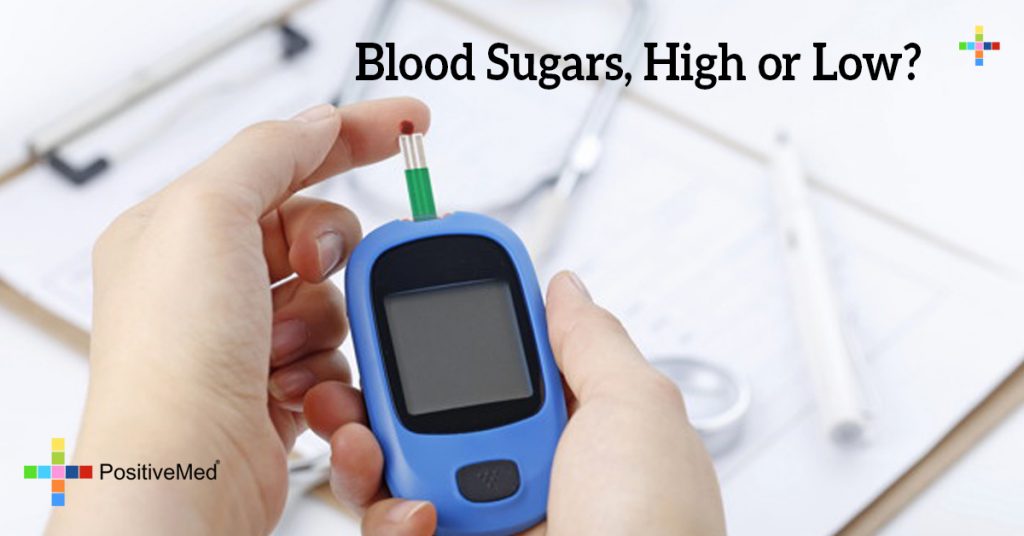
Blood Sugars, High or Low?
Diabetes (high blood sugar) has reached epidemic proportions in America, we must be very alert to the signs and symptoms, and if you have them, please see your health care professional. Knowledge is power my friends!
Prediabetes Symptoms
People with prediabetes have glucose levels that are higher than normal but not high enough yet to indicate diabetes. It was formerly known as borderline diabetes. Most people with prediabetes don’t have any symptoms, but they are considered to be at high risk for developing heart disease.
Normally your body produces a hormone called insulin to help your cells use the energy (glucose) found in food. With diabetes, either your body doesn’t make enough insulin or doesn’t efficiently use the insulin it does produce. When glucose builds up in the blood, it can damage the tiny blood vessels in the kidneys, heart, eyes, and nervous system.
With prediabetes, the subtle balance between glucose and insulin has been thrown off. The pancreas may not be able to produce enough insulin after a meal to “clear” the incoming glucose from the blood, or cells may be insulin resistant. When cells are insulin resistant, they won’t allow the insulin to escort glucose from the bloodstream into them. Too much glucose in the blood is also called high blood sugar or hyperglycemia. A low blood sugar level is called hypoglycemia.
If you have prediabetes, you’re at high risk of developing type 2 diabetes as well as the serious medical problems associated with diabetes, including heart disease and stroke. With pre-diabetes, you are at a 50% higher risk of heart disease and stroke than someone who does not have pre-diabetes.
To determine if you have prediabetes, your doctor can perform one of three different blood tests: the fasting plasma glucose (FPG) test, the oral glucose tolerance test (OGTT) or the Hemoglobin A1C (or average blood sugar) test.
The CDC estimates about 79 million people in the U.S. over age 20 have prediabetes, at least 5 million of which are of African descent. Prediabetes should not be ignored. It signals the likely onset of a more serious condition and can begin the process of doing damage to your heart as well as other organs such as the kidneys, eyes, and nervous system.
The good news is there are simple measures you can take to reduce the risk of developing diabetes, these measures can play a significant role in early diagnosis.
The following points highlight important actions you can take to help reduce diabetes risk.
1- Have regular checkups with your doctor. While the general rule is to have an annual visit, if you are overweight, have high blood pressure, high blood glucose or even high cholesterol, you may want to consider visiting your doctor every 6 months to have your numbers checked and discuss any health concerns.
2- Review risk factors and prevention measures. Prediabetes is a common condition experienced by people who develop type 2 diabetes. This may be a wake-up call as many who are diagnosed with type 2 experience little or no symptoms. Risk factors for both conditions are the same while they are both preventable with weight management, regular exercise, and healthy eating habits.
3- Know how to keep your numbers under control and which areas to keep an eye on. For instance, blood glucose (A1C) should be less than 7% and can be checked by your doctor at least twice a year. Your blood pressure should be less than 130/80 mmHg, which should be checked each time you visit your doctor. Cholesterol (LDL) should be checked at least once annually and less than 100 mg/dl.
4- Set personal goals and review them with your doctor. Each person is different. Other factors such as lifestyle habits and family health history should be reviewed to learn how you can adopt necessary changes to reduce diabetes risk.
Symptoms of Hypoglycemia
Cold, clammy skin
Trembling or feelings of nervousness
Lack of motor coordination and fatigue
Irritability or confusion
Blurred vision, headache or dizziness
Nausea or stomach pain
Fainting or unconsciousness
Symptoms of Hyperglycemia
Increased thirst and urination
Sweet odor to the breath
Fatigue
Agitation and confusion
High levels of ketones in the urine
Weight loss
Edited By: Ellie Aug 1st 2014






